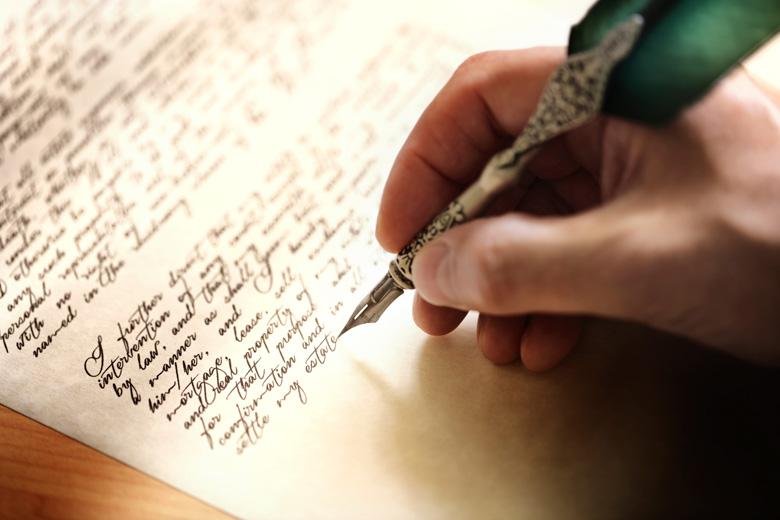Introduction to Shayari and Its Cultural Significance
Shayari, a revered form of poetic expression, holds a significant place in Indian culture. Originating from Persian poetry, Shayari has evolved into a distinct and influential medium, intricately woven into the fabric of Indian literary and cultural traditions. This poetic form, characterized by its eloquent verses and rhythmic cadence, serves as a conduit for expressing a wide array of human emotions, thoughts, and philosophies.
Historically, Shayari flourished during the Mughal era, when Persian literature and culture deeply influenced the Indian subcontinent. Over the centuries, Shayari has seamlessly integrated into various regional languages, including Urdu, Hindi, and Punjabi, enriching the literary landscape of India. The evolution of Shayari reflects the dynamic interplay between cultural heritage and contemporary expression, making it a timeless art form.
In Indian literature, Shayari has carved out a unique niche, often revered for its profound ability to convey complex emotions with simplicity and grace. It has been a favored medium for poets to articulate themes of love, longing, sorrow, and joy. The cultural significance of Shayari extends beyond literature, permeating popular culture through music, cinema, and social gatherings. Shayari sessions, known as “mushairas,” are celebrated events where poets recite their compositions, fostering a communal appreciation for poetic artistry.
The impact of Shayari on popular culture is evident in Bollywood, where lyrical dialogues and song lyrics often draw inspiration from this poetic tradition. Shayari’s influence is also visible in contemporary literature, where modern poets continue to explore and innovate within this traditional framework. As a result, Shayari remains a vibrant and evolving art form, resonating with audiences across generations and social strata.
In essence, Shayari is more than just a form of poetry; it is a cultural emblem that encapsulates the richness of Indian heritage. Its enduring appeal lies in its universal ability to touch hearts and minds, making it an integral part of India’s literary and cultural identity.
Mirza Ghalib: The Timeless Maestro
Mirza Asadullah Baig Khan, widely known as Mirza Ghalib, is often regarded as one of the most illustrious Urdu poets in India. Born on December 27, 1797, in Agra, Ghalib’s life was marked by personal tragedies and a relentless quest for intellectual and emotional fulfillment. Despite facing numerous challenges, including the loss of seven children and financial hardships, Ghalib’s literary genius shone through, leaving an indelible mark on the world of Shayari.
Ghalib’s poetry is celebrated for its profound depth, intricate wordplay, and the seamless fusion of emotion and intellect. His major works, including the “Diwan-e-Ghalib,” showcase his mastery over the Urdu language and his ability to convey complex emotions with remarkable simplicity. Ghalib’s Shayari often reflects his philosophical musings on love, loss, and the human condition, making his verses timeless and universally relatable.
One of Ghalib’s most famous Shayaris is:
“Hazaron khwahishen aisi ke har khwahish pe dam nikle, Bahut nikle mere armaan lekin phir bhi kam nikle.”
This couplet, which translates to “Thousands of desires, each worth dying for, many of them I have realized…yet I yearn for more,” captures the essence of human longing and the insatiable nature of desires. Ghalib’s ability to articulate such profound thoughts with elegance and brevity is what sets him apart as a maestro of Shayari.
Another notable verse by Ghalib is:
“Dil-e-naadan tujhe hua kya hai,Aakhir is dard ki dawa kya hai.”
Translated, it means “Oh naive heart, what has happened to you? What is the remedy for this pain?” This couplet exemplifies Ghalib’s exploration of the inner turmoil and existential questions that plague the human soul.
In summary, Mirza Ghalib’s contribution to Urdu poetry is unparalleled. His Shayaris continue to resonate with readers across generations, offering solace, wisdom, and a glimpse into the intricacies of the human experience. His legacy as a timeless maestro endures, cementing his place as one of India’s most celebrated Shayars.
Allama Iqbal: The Visionary Poet
Allama Iqbal, known as the “Poet of the East,” holds a remarkable position in the pantheon of great poets, not only in India but across the entire Indian subcontinent. His philosophical and inspirational poetry has transcended the boundaries of time, leaving an indelible mark on the socio-political landscape of the region. Iqbal’s work is a profound blend of spiritual and intellectual enlightenment, which has played a pivotal role in awakening the consciousness of the masses and inspiring the youth.
Iqbal’s poetry is characterized by a deep sense of philosophical inquiry and a quest for self-realization. His verses often reflect themes of divine love, the human ego, and the importance of knowledge and self-awareness. One of his most famous Shayaris, “Khudi ko kar buland itna ke har taqdeer se pehle, Khuda bande se khud pooche, bata teri raza kya hai,” encourages individuals to elevate their self-esteem and capabilities to such heights that even fate must seek their consent before unfolding.
The socio-political impact of Iqbal’s poetry cannot be overstated. His work played a crucial role in the intellectual and cultural revival of Muslims in the Indian subcontinent. He envisioned a separate homeland for Muslims, a dream that eventually culminated in the creation of Pakistan. Iqbal’s poetry provided the ideological foundation for the movement, urging people to rise against oppression and strive for justice and equality.
In today’s world, Iqbal’s Shayari continues to resonate, offering guidance and inspiration to those seeking to navigate the complexities of modern life. His emphasis on self-discovery and intellectual growth remains relevant, encouraging individuals to pursue knowledge and cultivate inner strength. The timeless wisdom embedded in his poetry makes Allama Iqbal a true visionary poet whose legacy endures through the ages.
Javed Akhtar: The Modern Day Wordsmith
Javed Akhtar is a name synonymous with modern Indian poetry and Bollywood lyricism. As a contemporary poet and lyricist, his Shayaris have captivated audiences across generations. Akhtar’s career, spanning several decades, has seen him contribute significantly to the realms of both poetry and cinema. His distinctive style is a seamless blend of traditional Shayari and modern themes, making his work both timeless and relevant in today’s context.
Born into a family with a rich literary heritage, Akhtar was almost destined to follow a path of poetic excellence. His early influences include his father, Jan Nisar Akhtar, a renowned poet himself. This background laid a solid foundation for Javed Akhtar’s own poetic journey, which began in earnest in the 1970s. Over the years, he has penned countless songs for Bollywood films, earning accolades and awards for his outstanding contributions. His lyrics often reflect deep emotional undercurrents and social commentary, resonating with a wide audience.
One of the hallmarks of Akhtar’s Shayari is his ability to infuse traditional poetic forms with contemporary sensibilities. His work often explores themes of love, loss, and existential musings, all while maintaining a modern outlook. For instance, in his Shayari “Woh Kaagaz Ki Kashti,” he nostalgically reminisces about childhood, deftly blending sentimentality with a poignant reflection on the passage of time. The imagery is both vivid and relatable, showcasing his mastery of the craft.
Another example is his celebrated piece “Zindagi Ki Rahon Mein,” which delves into the complexities of life and relationships. Here, Akhtar’s use of modern vernacular, coupled with classical poetic structure, creates a unique tapestry that appeals to both traditionalists and modernists alike. His ability to navigate between these dualities is what sets him apart as a modern-day wordsmith.
Javed Akhtar’s Shayaris continue to inspire and influence the contemporary literary scene in India. His work not only pays homage to the rich tradition of Shayari but also pushes its boundaries, ensuring its relevance in an ever-changing world. Through his poetic brilliance, Akhtar has carved a niche for himself, solidifying his place among the top Shayars in India.
Gulzar: The Poet of Emotions
Gulzar, a stalwart in Indian poetry and cinema, has carved a unique niche for himself with his evocative and emotionally charged Shayaris. Born as Sampooran Singh Kalra, Gulzar’s journey from a small village in Punjab to becoming one of India’s most revered poets and lyricists is nothing short of extraordinary. His association with Indian cinema has left an indelible mark, with his lyrics and dialogues resonating deeply with audiences. His ability to convey complex emotions through simple yet profound words is what sets him apart.
Gulzar’s Shayaris are a masterclass in emotional expression. His verses often explore themes of love, loss, longing, and the myriad shades of human experience. His poetic genius lies in his ability to articulate the ineffable, making the intangible emotions palpable. For instance, consider one of his famous Shayaris: “Dil dhoondta hai phir wahi fursat ke raat din, baithe rahe tasavvur-e-jaana kiye hue.” This couplet beautifully encapsulates the yearning for lost moments of leisure and contemplation, a sentiment that strikes a chord with many.
His contribution to Indian cinema is monumental, having penned lyrics for countless timeless songs. Films like “Ijaazat,” “Masoom,” and “Aandhi” feature his poignant lyrics that elevate the narrative and evoke deep emotional responses. Gulzar’s collaboration with music composers like R.D. Burman and A.R. Rahman has produced some of the most memorable songs in Bollywood history. His Shayaris are not just limited to songs but also find a place in his dialogues and screenplays, enriching the cinematic experience.
Gulzar’s work transcends linguistic and cultural barriers, making him a universal poet. His Shayaris have been translated into numerous languages, allowing a wider audience to appreciate his literary prowess. Through his words, Gulzar invites readers and listeners into a world of profound emotional depth, offering solace, introspection, and a deeper understanding of the human condition.
Kaifi Azmi: The Revolutionary Poet
Kaifi Azmi, born as Syed Athar Hussain Rizvi, was a poet whose work transcended mere literary boundaries to become a force for social change. Known for his revolutionary spirit and socially conscious Shayaris, Azmi’s contributions to Hindi and Urdu poetry are both profound and enduring. His involvement in the Indian freedom struggle set the stage for his later work in progressive literature, where he addressed issues of social justice, equality, and human rights with unmatched eloquence.
Azmi’s literary journey began at a young age, and he quickly became associated with the Progressive Writers’ Movement, a collective of writers and poets advocating for social reform. His poetry often reflected the socio-political milieu of the times, making him a voice for the oppressed and the marginalized. One of his most famous works, “Aurat,” is a testament to his advocacy for women’s rights and emancipation. In it, he urges women to break free from societal shackles and claim their rightful place in the world.
His Shayaris are characterized by a deep empathy for the human condition and a fervent desire for societal transformation. Verses such as “Kar chale hum fida jaan-o-tan saathiyon” from the movie “Haqeeqat” have become anthems of patriotism and sacrifice. Azmi’s ability to infuse his poetry with a revolutionary zeal while maintaining a lyrical and emotional depth sets him apart as a distinguished figure in Indian literature.
Kaifi Azmi’s legacy extends beyond his written work. He was also an active participant in the Indian People’s Theatre Association (IPTA), using the platform to bring his ideas to a broader audience. His contributions to film and theater further solidified his status as a multifaceted artist committed to progressive causes.
In summary, Kaifi Azmi’s Shayaris continue to resonate with readers and listeners, serving as a powerful reminder of the transformative potential of literature. His work remains a cornerstone of revolutionary poetry in India, inspiring future generations to strive for a more just and equitable society.
When examining the contributions of the five featured Shayars, it becomes evident that each has carved a unique niche in the realm of Indian poetry, contributing a distinct style and thematic essence to the art of Shayari. Mirza Ghalib, for instance, is celebrated for his profound and intricate ghazals that transcend temporal boundaries. His work often delves into themes of love, existentialism, and the human condition, resonating deeply with readers across generations. His mastery over language and metaphors has set a benchmark in Shayari, making his verses timeless.
In contrast, Allama Iqbal’s Shayari is imbued with a philosophical and spiritual depth that reflects his vision for societal reformation and empowerment. Known as the “Spiritual Father of Pakistan,” Iqbal’s poetry often addresses themes of self-discovery, inner awakening, and the collective consciousness of the Muslim community. His works inspire a sense of pride and identity, making them particularly poignant in socio-political contexts.
Faiz Ahmed Faiz’s poetry stands out for its revolutionary zeal and social activism. Faiz’s Shayari often serves as a voice against oppression and injustice, intertwining love with themes of resistance and hope. His eloquent expression of the struggles of the common man has earned him a revered place in the hearts of many, making his verses a rallying cry for change.
Javed Akhtar, on the other hand, brings a contemporary flair to Shayari, blending classical forms with modern sensibilities. His works often explore the nuances of modern-day relationships, societal norms, and personal introspection. Akhtar’s ability to weave everyday experiences into poetic expressions makes his Shayari relatable to a broad audience, bridging the gap between traditional and contemporary poetry.
Lastly, Gulzar’s poetry is marked by its simplicity and profound emotional impact. Known for his evocative imagery and poignant themes, Gulzar’s Shayari often revolves around life’s fleeting moments, memories, and the essence of human connections. His minimalist yet impactful style has endeared him to readers who appreciate the beauty in simplicity.
While these Shayars share a common love for the art of Shayari, their distinct styles and thematic explorations set them apart, contributing richly to the tapestry of Indian poetry. Their works continue to inspire, provoke thought, and evoke emotions, cementing their legacies in the world of literature.
Conclusion and Reflection on the Legacy of Indian Shayari
Throughout this blog post, we have explored the lives and works of five of India’s most famous Shayars. These poets have not only contributed significantly to the literary landscape but have also enriched Indian culture with their profound and evocative Sayari. Their verses capture the essence of human emotions, societal observations, and philosophical reflections, making Shayari a cherished art form that resonates deeply with audiences across generations.
The legacy of Indian Shayari is one of timeless beauty and enduring relevance. It serves as a bridge connecting the past to the present, allowing contemporary readers to experience the depth and richness of traditional poetic expressions. The works of these Shayars continue to inspire new generations of poets and enthusiasts, ensuring that the art form remains vibrant and dynamic.
Preserving and promoting Shayari is crucial for maintaining our cultural heritage. By engaging with the works of these poets, readers can gain a deeper appreciation for the intricacies of language and the power of poetic expression. Additionally, exploring more Shayari can provide valuable insights into the historical and cultural contexts in which these poets wrote, further enriching our understanding of India’s literary tradition.
We encourage readers to delve into the works of the Shayars discussed in this blog post and to seek out other poets who have contributed to this rich tradition. By doing so, we can help ensure that the art of Shayari continues to thrive and inspire future generations. Let us celebrate and honor the legacy of Indian Shayari by keeping this beautiful art form alive and vibrant.



